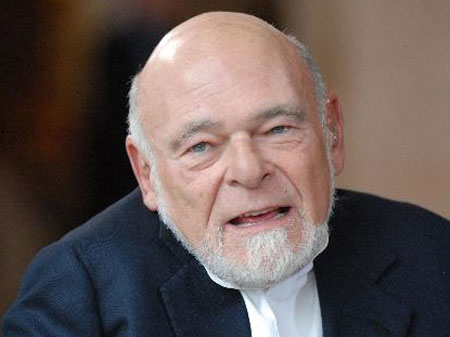 Here’s the redesigned home page of the Orlando Sentinel. This will apparently serve as a model for redesigns of several other Tribune Co. properties. What do you think? Ping us in the comments area below.
Here’s the redesigned home page of the Orlando Sentinel. This will apparently serve as a model for redesigns of several other Tribune Co. properties. What do you think? Ping us in the comments area below.
Tribune Co.’s Chief Innovation Officer Lee Abrams has already weighed in and HE LOVES IT! The Wall Street Journal explains the background of the ambitious company-wide effort and says the South Florida Sun-Sentinel and the Baltimore Sun are next on the redesign list, followed by the Chicago Tribune. Whether a visual makeover can repair the problems all these papers are suffering in their core markets is a matter of speculation, but there’s no doubt Zell & Co. are trying some new tactics.
A Modest Proposal for Miami
Could Miami become a one-newspaper town? Alan Mutter thinks so, and he puts forth a persuasive argument for restructuring the Herald and the Sun-Sentinel under a joint operating agreement (JOA). JOAs were a 1970s gift from the government to the newspaper industry that enabled competing newspapers to consolidate operations and do business as a legal duopoly. For the last 30 years, it’s been a license to print money. Today, it may be a lifeline to publishers whose only alternative is closure. Unfortunately, JOAs have also historically been a license for publishers to become fat and complacent as competition is removed from the landscape. They’re one of the reasons the industry is in so much trouble today.
Editors Debate Newspaper Survival
A group of Chicago journalists got together last week to discuss the topic of “Will Newspapers Survive?” The panelists were all working reporters and editors who are realistic about the future and their attitudes were strikingly sanguine, as reported by Chicago Reader. Tom McNamee, editorial page editor of the Chicago Sun-Times, offered the most dispassionate perspective: “We may not all be making fortunes. Our 30 percent profit days are over. We may not survive. But you know what — that’s our problem. Not to say that the world’s in crisis because newspapers may not survive in the form that we recognize now.†Other panelists blamed the business side for not innovating quickly enough. The editors are psyched to change, they said, but the sales and management suits are too stuck on their historic profit margins. (via Editors Weblog )
Miscellany
- Washington Post Executive Editor Leonard Downier, who led the newsroom to 25 Pulitzer Prizes, will step down after 17 years in the position and 44 years with the newspaper. Downie, 66, said new blood is needed to accommodate rapid changes in the business. “So much further change now needs to take place at the newspaper and Web site, and someone else should be tackling that,” he said. He is a true class act.
- The Georgetown (Kentucky) News-Graphic will switch from afternoon to morning delivery, saying that the cost benefits are compelling in this day of stratospheric gas prices. Publisher Mike Scogin notes “In the outer parts of the county…carriers sometimes travel several miles to deliver just a couple of newspapers.” (via Fade to Black )
- As the Daytona Beach News-Journal waits to be sold, its publisher talks straight to the staff. Gone are 99 positions and a whole slew of tasks are being transferred to other departments or outsourced entirely. Bureaus will close, stock tables will be cut and business sections will be consolidated. It all adds up to one big morale hemorrhage, but the News-Journal publisher’s message is realistic: “Despite the unavoidable disruptions and distractions this week, we still have jobs to do, and it is in everybody’s best interest that we do them professionally and well.”
- If your newspaper is considering a 10% staff cut, be glad you aren’t in Taiwan. The China Times will lay off almost half its staff due to the weak economy.
- It seems like you could spend all day just reading gossip and analysis blog (like this one) about the newspaper industry. Danny Sanchez has gone and assembled a pretty fine directory of them.
And Finally…
The editors of the Washington Post have recently been quoted as saying that the paper could do with fewer copy editors. The Post‘s Gene Weingarten has some fun with that idea. Thanks for reminding us that the wizards of grammar and spelling do play a vital role. (via Mark Hamilton)
 You have to wonder if Chicago Tribune owner Sam Zell wishes he had stayed in the predictable world of real estate, where market collapses are at least cyclical. As a novice publishing CEO presiding over a market shift of historic proportions, he looks increasingly helpless even as he becomes more belligerent. Among the recent stories:
You have to wonder if Chicago Tribune owner Sam Zell wishes he had stayed in the predictable world of real estate, where market collapses are at least cyclical. As a novice publishing CEO presiding over a market shift of historic proportions, he looks increasingly helpless even as he becomes more belligerent. Among the recent stories: The
The 

